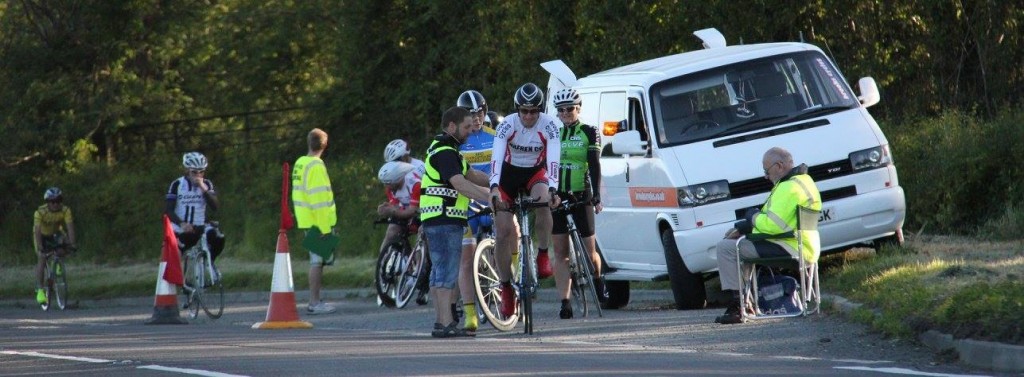Download the guide here Guidelines for Marshals During a Time Trial
Hafren CC
Guidelines for Marshals During a Time Trial
The Time Trial series forms the heart of the club during the summer months and events cannot happen without help from Time keepers, starters and other marshals. Your volunteering for this is greatly appreciated by all who ride the events. These guidelines have been prepared to assist in clarifying what is required of you to ensure a safe and successful event. If you are new to helping at a TT and unsure of anything you are being asked to do please ask for additional instructions. Although these roles carry a lot of responsibility on the night they are rewarding to do and will add to your experience of club life, so please enjoy the experience. Thank you for making the race possible and safe
During a TT marshals are assigned to the course in accordance with the club’s risk assessment for that course
The job of a corner marshal is twofold:
– to alert other road users to the fact that there is a cycle race in progress which allows
them to proceed with appropriate caution; and,
– to inform the riders of the turn.
By law marshals cannot stop a motorist to allow a riders to negotiate a corner or other hazard. Remember that, when you are marshalling, you are a representative of your club and sport so always be courteous to other road users, even if they take exception or are abusive to you. Most drivers are courteous in return.
Marshalling may require you to stand out in adverse weather conditions so remember to bring appropriate clothing and (on much fewer occasions) sun block.
If you have volunteered to marshal then you should:
- Turn up to the start/finish area (or sign-on area in the case of an open race) with reasonable time to allow you to gather your equipment and get to your marshal position before the race starts. Usually 30 minutes before the race starts is plenty of time.
- Enquire as to which corner you will be marshalling and if anyone will be there with you.
- Collect your bib and ‘Caution Cycle Race’ if required
- Make your way to your marshal point with all your equipment.
- Once at your position inspect it for loose gravel or objects on the road which may be a hazard to the riders and do your best to remove them or be better informed to advise riders of the hazard
- Put out signs as appropriate
9.As the riders approach
- Indicate with a clear arm signal or flag the direction the rider should take,
- check for other road users approaching the junction
- shout a warning if there are any hazards at the corner that couldn’t be removed (eg. potholes) or if there is any traffic which may cause a hazard.
Keep your shouts short, clear and loud. . An appropriate shout could be ‘Pothole’ or ‘Car, keep tight!’.
It is very important that marshals do not put themselves in danger in order to stop oncoming traffic.
It is essential that all riders, and marshals, understand that marshals cannot stop vehicles and the onus is always on the riders to stay on their own side of the road. Marshals will never be held responsible if a rider breaks the rules of the road, even if the marshal mistakenly indicates that the road is clear of hazards

